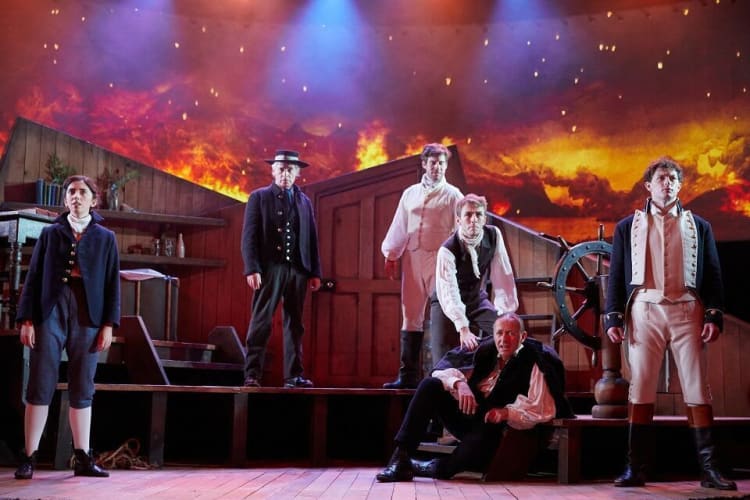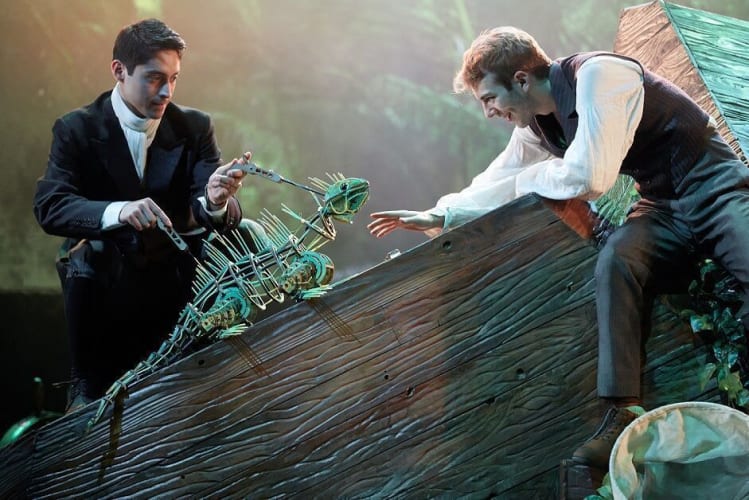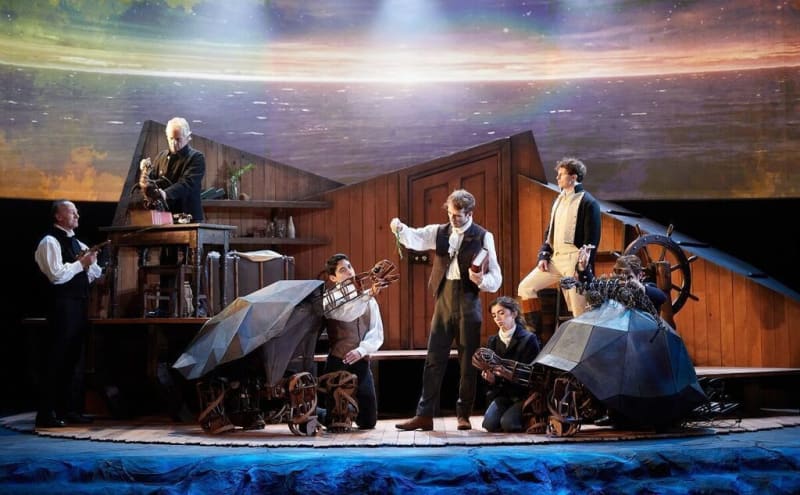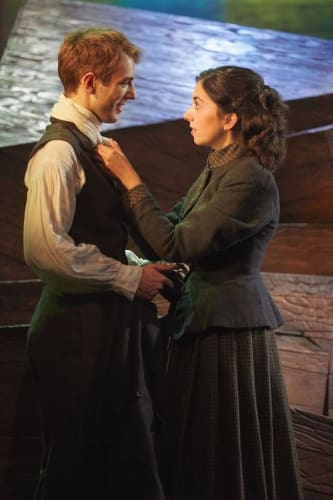The Natural History Museum has turned its Jerwood Gallery into an end-stage theatre with a single sweep of raked seating to house an imaginatively staged drama that tells the tale of young Charles Darwin’s voyage round the world on HMS Beagle.
This was the voyage that opened his eyes to the variation of animal species and showed him the evidence for the earth’s geological history that produced ideas that challenged accepted ideas of creation.
The Wider Earth isn’t a lecture on evolution and Darwinism. His theories came later; this five-year voyage (1831-36) was a quarter of a century before the publication of On the Origin of Species. The play, designed for a young audience, takes them on the voyage.
It starts with him at Cambridge finding a beetle to add to the collection, which seems to interest him more than his studies to become a clergyman, and with the young woman he wants to marry before being accepted as the naturalist Captain Fitzroy wants to have on the Beagle. Everything that happened in five years at sea can’t be packed into two hours but here are some of the highlights of 22-year-old Charles encounters with the natural world and with people.
Bradley Foster’s Darwin has a freshness and enthusiasm that make him a storybook boy hero, easy to identify with. He gets on well with Jack Parry-Jones’s Fitzroy, despite disagreements over slavery (Darwin’s family were abolitionists) and the Captain’s religious orthodoxy, and he seems to charm older academics: Andrew Bridgmont’s kindly Professor Henslow helps secure him this voyage into the future.
The Wider Earth doesn’t offer dramatic moments of scientific discovery, rather the slow process of facts coming together to form theories, but it does shares Darwin’s awe and amazement at nature’s power and diversity and it does so through its very theatricality.
The setting is a revolving island of angled wood surfaces that can be anything from Welsh mountainsides to reefs underwater, the rocks of Galapagos or turns to reveal a college interior, a cabin or the deck of the Beagle. Above is a cyclorama-like strip of sail on which a panoramic video sketches and paints building and scenery, shows the burning fires of Tierra del Fuego, crashing waves, erupting volcanoes, shooting stars in the night sky. On stage appears an array of new creatures: butterflies and birds, a whale, fishes, a turtle then the iguanas and giant tortoises of the Galapagos.
The animals are all skilfully created puppets, cleverly manipulated by the cast. This isn’t War Horse; they don’t become characters in the story but are representations whose recreation generates the same kind of wonder as the living creatures did on first acquaintance.
These puppets by the Dead Puppet Society, Aaron Barton and writer/director David Morton’s design, Justin Harrison’s projections, David Walters’s lighting and music by Tony Buchen and Lior come together to present an ever-changing picture with the excitement of storms at sea, volcanic bombardment, scenes full of movement or countryside quiet.
There is a light layer of intellectual argument as Darwin comes to terms with the challenge that his observations presents to conventional religious dogma, but the exposition of his theories isn’t part of the story.
Most of its audience will know them, however, and we are offered reminders: his sketch of the branches of evolution for instance like a constellation in the heavens and there is an extra frisson, a magical moment as the Galapagos finches, so central to developing his theory of evolution, flutter over rocks and the shells of those great tortoises. This is eminently watchable!



